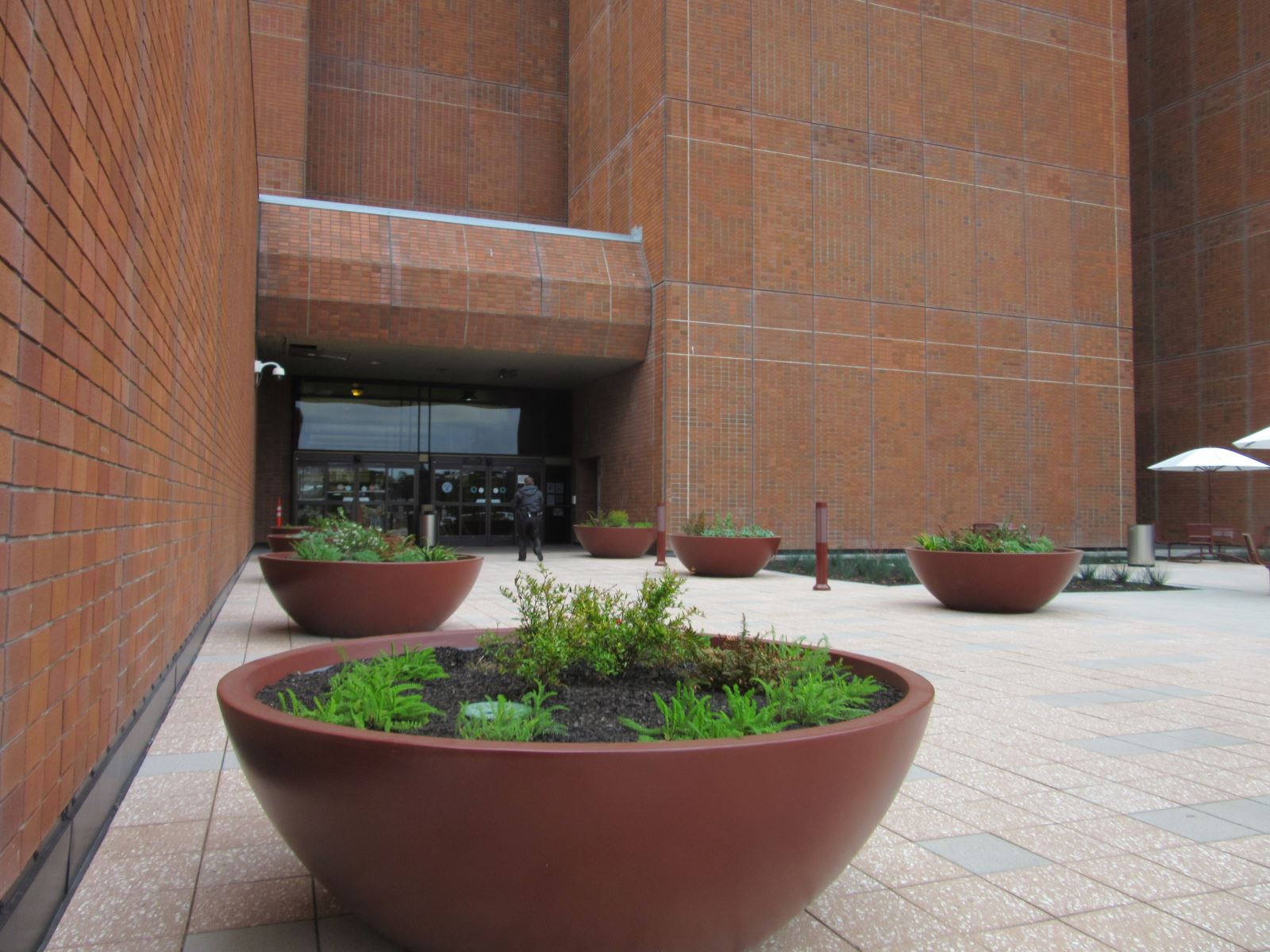A plaza deck is a walking surface, which sometimes can accommodate vehicles, typically waterproofed to protect the underlying structure and/or occupied spaces below. Common surface treatments include concrete, ceramic tile, stone or other paving material, usually with a bi-level drain used to accept both surface run-off and water at the waterproofing membrane level. Structural substrates are commonly wood or concrete.
ASTM E2266, Standard Guide for Design and Construction of Low-Rise Frame Building Wall Systems to Resist Water Intrusion, has the following definition: Protected membrane plaza deck – a plaza deck constructed with the waterproof membrane placed directly over the structural deck surface (usually concrete or wood panel sheathing) with a separate traffic-bearing surface, such as concrete, ceramic tie, or pedestal-supported pavers placed on top of the membrane. Because the underlying structure is vulnerable to water damage in case of leaks, design and construction should be well thought out and well executed. Repairing failed plaza decks can be expensive because of the need to remove the walking surface and associated flashings, seals, accessories and interfaces with adjoining surfaces.
Here is a primer by our firm’s founder, Tom Butt, FAIA, LEED AP:

